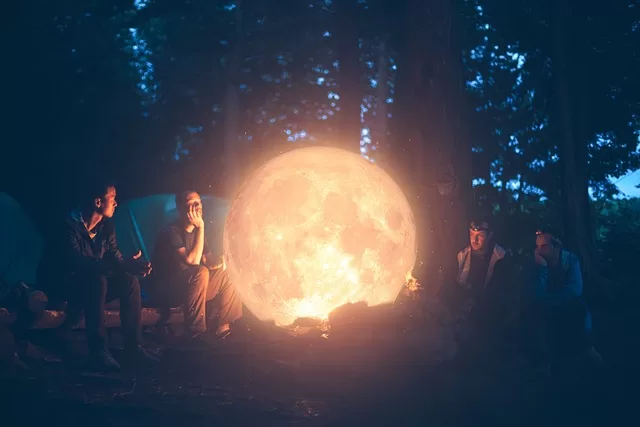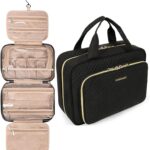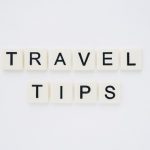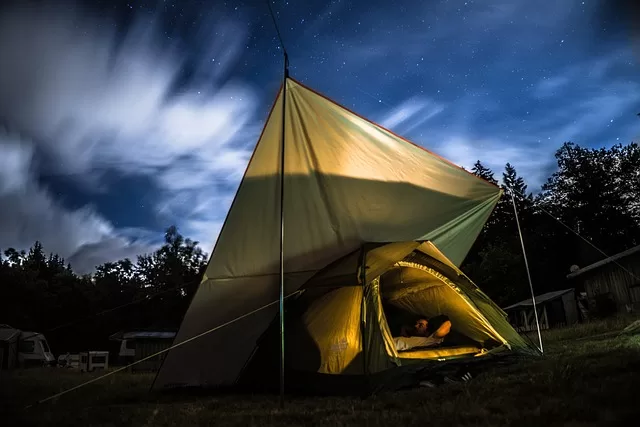Camping is a popular activity for people of all ages and backgrounds. The chance to escape the hustle and bustle of daily life and spend time in nature is an appealing prospect for many. However, planning a successful and enjoyable camping trip can seem overwhelming, especially for those new to the activity. The key to a successful and enjoyable camping trip is in the planning.
This article will provide a detailed guide on how to plan a successful and enjoyable camping trip, from how to prepare for camping, to choosing a campsite and packing your essential camping gear and supplies to setting up camp and enjoying outdoor activities. With proper planning, anyone can have a memorable and enjoyable camping experience. So whether you’re a seasoned camper or a first-timer, read on to learn how to plan your next camping trip.
Choosing a Campsite
When it comes to camping, choosing a suitable campsite is essential for a successful and enjoyable experience. One of the first things to do is choose a campsite, to begin with. The campsite you choose will determine other things about how to plan for a successful and enjoyable camping trip.
Types of Campsites
There are various types of campsites to choose from. Your choice of the campsite will be determined by several factors like your preferences, the amenities, and the type of camping you plan to do. Some campsite types to consider when planning a camping trip include:
- Public campgrounds: These are campsites operated by state and national parks, as well as other government agencies. They offer amenities such as restrooms, showers, and fire pits.
- Private campgrounds: These are campsites operated by private companies or individuals. They may offer more amenities than public campgrounds, such as swimming pools, playgrounds, and laundry facilities.
- Dispersed camping: This type of camping involves finding a spot to camp in a public area outside of a designated campground. It is often free, but there are usually no amenities available.
Factors to Consider When Choosing a Campsite:
As earlier stated, certain factors will influence and guide your choice when it comes to choosing a campsite. Here are some of the things you should consider:
- Location: Do you want to be close to hiking trails, water sources, or other attractions? Consider the location of the campsite in relation to your planned activities.
- Size: Consider the size of your camping party and the size of your equipment. Make sure the campsite is large enough to accommodate your needs.
- Terrain: Is the campsite flat or sloped? Is there ample space for your tent and other equipment?
- Privacy: Do you want to be close to other campers or would you prefer a more secluded site?
- Accessibility: Consider how easy it is to get to the campsite. Will you need to hike or drive on rough terrain to get there?
Online Resources For Finding Campsites
Are you worried about how to find and locate the best campsite for you? There are many online resources available to help you find the perfect campsite for your needs. Some popular sites include:
- Reserve America – This site allows you to search for campsites in state and national parks across the United States.
- Hipcamp – This site offers a variety of camping options, including public and private campgrounds, as well as unique camping experiences such as treehouses and glamping tents.
- Recreation.gov – This site allows you to search for campsites in national forests, national parks, and other federal lands.
Gathering Essential Equipment and Supplies
When planning for a camping trip, it is important to gather all the necessary equipment and supplies. You need a camping checklist to make this easy and to properly pack so that you don’t miss anything. Here are some essential items to consider
Tent
A good tent is a must-have for any camping trip. When choosing a tent, consider the size of your camping party, the expected weather conditions, and the terrain you will be camping on. Look for a tent that is easy to set up and provides ample space for sleeping and storing your gear. If going on a solo trip, or your first camping experience, and in the midst of people who are like you too, it is best to learn how to pitch a tent like a pro to avoid getting frustrated and to have a successful and enjoyable camping trip.
Sleeping Bags and Pads
Sleeping bags and pads are essential for a good night’s sleep while camping. Choose a sleeping bag that is appropriate for the expected temperatures, and look for a pad that provides insulation and cushioning.
Cooking Supplies
Cooking supplies like camping stoves and utensils will depend on your cooking preferences and the type of camping you will be doing. At a minimum, you will need a camping stove, fuel, and cookware. Consider bringing a camping cooler and storage for perishable food items.
Food and Water
Pack non-perishable food items that are easy to prepare and provide enough energy for your planned activities. Bring plenty of water and take along with you a good camping water bottle and hydration system like a water filtration system to ensure you have access to clean drinking water.
Clothing and Personal Items
Pack appropriate camping clothing and apparel for the expected weather conditions, including layers for cooler temperatures. Don’t forget essentials such as toiletries, sunscreen, and insect repellent.
First-Aid and Emergency Kit
A camping first-aid and emergency kit is essential for any camping trip. Be sure to include items such as bandages, antiseptic, and pain relievers. Consider bringing emergency equipment such as a flashlight, whistle, and extra batteries.
Creating a Meal Plan
Planning your meals ahead of time can save you time, money, and stress while camping. Here are some factors to consider when creating a meal plan:
Nutritional Needs
Consider the nutritional needs of your camping party, including any dietary restrictions or allergies.
Cooking Equipment
Take into account the cooking equipment you will be using and plan meals accordingly. For example, if you are only bringing a camping stove, you may want to plan meals that can be cooked in one pot or skillet.
Storage
Consider the storage options you have available and plan meals accordingly. For example, if you have limited cooler space, plan meals that do not require refrigeration.
Convenience
Plan meals that are easy to prepare and clean up, as well as meals that can be prepared ahead of time. Some meal ideas and recipes to consider for your camping trip include:
- Breakfast: oatmeal, breakfast burritos, pancakes, or muffins
- Lunch: sandwiches, wraps, or salads
- Dinner: foil packet meals, stir-fry, chili, or tacos
- Snacks: trail mix, fruit, granola bars, or beef jerky
Cooking and Storing the Food
Here are tips to pack and store your meals for camping and while camping:
- Pack ingredients in individual portions to save time and reduce waste.
- Freeze meat ahead of time to keep it fresh longer in the cooler.
- Store dry goods such as rice and pasta in airtight containers to keep them fresh and prevent pests.
- Keep your cooler out of direct sunlight and avoid opening it unnecessarily to help keep food cold.
- Use disposable plates and utensils to reduce cleanup time and make mealtime easier.
Preparing and Planning for Outdoor Activities
One of the best parts of camping is the opportunity to enjoy outdoor activities. Here are some popular outdoor activities to consider when planning for your camping trip:
Hiking and Backpacking
Research the hiking trails in the area and plan your hikes accordingly. Be sure to pack appropriate gear, including sturdy hiking boots, a backpack, and a map or GPS device. Don’t forget to bring plenty of water and snacks.
Fishing
If you plan to fish during your camping trip, make sure you have the necessary permits and your camping fishing gear and tackle. Research the fishing regulations in the area and pack appropriate gear, such as a fishing rod, tackle, and bait.
Kayaking and Canoeing
If you plan to kayak or canoe during your camping trip, make sure you have the necessary equipment and safety gear. Research the waterways in the area and check for any boating regulations. Pack waterproof gear and plenty of sunscreens.
Biking
If you plan to bike during your camping trip, research the bike trails in the area and pack appropriate bicycle camping gear, including a helmet, bike lock, and repair kit. Don’t forget to bring plenty of water and snacks.
Other Recreational Activities
Consider other recreational activities that may be available in the area, such as rock climbing, bird watching, or horseback riding. Research the equipment and safety gear needed for these activities and plan accordingly.
Packing and Organizing
Efficient packing and organizing can help ensure a smooth and stress-free camping trip. Here are some tips to help you pack and organize your gear:
Make a Packing List
Creating a camping packing list ahead of time to ensure you don’t forget anything important is one of the important ways to go about planning a camping trip. Organize your list by categories, such as camping gear and equipment, clothing, and food.
Pack Efficiently
When packing, use space-saving techniques, such as rolling clothes instead of folding them, and using compression bags for bulky items like sleeping bags.
Organize Your Gear
When you arrive at your campsite, organize your gear to make it easy to find what you need. Consider using labeled bins or packing cubes to keep your gear organized and easily accessible.
Prepare for Emergencies
Make sure you have a first-aid kit and emergency supplies, such as a flashlight and extra batteries. Consider packing a backup water filter or purification tablets in case your primary water source becomes contaminated.
Be Mindful of Weight
When packing, be mindful of the weight of your gear. Keep heavier items closer to your back to distribute weight evenly and prevent strain.
Leave No Trace
Pack out all of your trash and leave your campsite cleaner than you found it.
Setting up Camp
To set up camp like a pro, you need to plan. Mastering how to set up camp like a pro is one of the ways of planning a camping trip that will be fun and successful. Some of the steps for setting up camp include choosing a location, pitching your tent, and organizing the setup, and you need to be strategic about these.
Choosing a Campsite Location
Choosing a campsite location is crucial for a camp setup that will ensure a comfortable and safe camping experience. Here are some factors to consider when selecting a campsite:
- Terrain: Choose a flat and even surface to set up your tent. Avoid areas with sharp rocks, roots, or slopes that can cause discomfort and even injury.
- Water source: Choose a campsite near a water source like a stream, river, or lake. However, make sure the water source is safe for drinking and not contaminated.
- Proximity to trails and facilities: If you plan to hike or explore the area, choose a campsite that’s close to the trails. Additionally, if you need facilities like restrooms, choose a campsite that’s close to them.
- Privacy: Choose a campsite that’s away from other campers and offers some privacy.
- Wildlife: Be aware of the local wildlife and choose a campsite that’s away from their habitats. Additionally, keep your food and trash secured to avoid attracting animals.
Setting Up Your Tent and Campsite
Once you’ve chosen a campsite, located your campground, and chosen a spot, it’s time to set up your tent. Here are some tips for pitching your tent at the site:
- Clear the area: Before setting up your tent, clear the area of rocks, sticks, and other debris that can damage your tent. Additionally, remove any plants that can puncture your tent’s floor.
- Set up your tent: Follow the manufacturer’s instructions to set up your tent. Make sure the tent is secure and stable.
- Arrange your gear: Organize your gear inside the tent, so it’s easily accessible. Additionally, set up your cooking area away from your tent and any flammable materials.
- Secure your belongings: Keep your food and trash secured to avoid attracting animals. Additionally, secure your personal belongings to prevent them from blowing away or getting lost.
Making a Campfire and Campfire Safety
Building a perfect campfire and ensuring campfire safety for yourself, fellow campers, and the environment are all parts of the process of planning a camping trip that would be enjoyable when done well. Campfires can be a fun and enjoyable part of camping, but they can also be dangerous if not handled properly. Here are some campfire safety tips:
- Check fire restrictions: Before starting a fire, check for any fire restrictions in the area. If fires aren’t allowed, don’t start one.
- Choose a safe location: Choose a location for your campfire away from trees, bushes, and other flammable materials. Additionally, make sure the area is clear of debris.
- Build a fire pit: If there’s no fire pit, build one by digging a shallow hole and surrounding it with rocks.
- Start the fire safely: Use fire starters or kindling to start the fire. Avoid using gasoline or other flammable liquids. Additionally, never leave the fire unattended.
- Put out the fire: When you’re ready to put out the fire, pour water over the embers and stir them until they’re cool to the touch. Additionally, make sure the fire is completely out before leaving the campsite.
Enjoying the Campsite

Camping is not only about setting up camp and surviving in the wilderness, but it’s also about enjoying the great outdoors and making memories. By disconnecting from technology, exploring the area, and making the most of your time, you can create unforgettable memories and have a great camping experience. Here are some tips for enjoying all the available fun things to do when camping.
Relaxing and Enjoying Nature
One of the main reasons people go camping is to relax and enjoy nature. Here are some tips on how to do that:
- Disconnect from technology: Leave your phone, laptop, and other gadgets behind or keep them turned off. Instead, enjoy the peacefulness and tranquility of nature.
- Go for a hike: Take a leisurely stroll or a challenging hike and enjoy the scenery. Additionally, bring a book, sketchpad, or camera to document your experience.
- Listen to the sounds of nature: Take a moment to listen to the sounds of birds chirping, leaves rustling, and water flowing. It can be a meditative and calming experience.
- Practice mindfulness: Take deep breaths and practice mindfulness techniques like yoga or meditation to connect with nature and find inner peace.
Engaging in Outdoor Activities
Camping provides endless opportunities for outdoor activities. Here are some ideas for exploring outdoor fun activities:
- Fishing: If you’re near a body of water, bring your fishing gear and try your luck at catching dinner.
- Swimming: If it’s warm enough, take a dip in the lake or river. Additionally, bring some water toys like floaties or inner tubes for added fun.
- Cycling: Bring your bike and explore the trails or roads around your campsite. It’s an excellent way to get some exercise and see the sights.
- Canoeing or kayaking: If you’re near a lake or river, rent a canoe or kayak and explore the waterways. It’s a peaceful and scenic way to spend your time.
Making the Most of Your Time
Camping is all about making the most of your time. Don’t just whirl away time without doing anything or stooping to just one thing. Some of the ways to enjoy, and stay safe and comfortable while camping includes.
- Planning and cooking your meals: Planning a successful and enjoyable camping trip means planning your meals ahead of time and bringing the necessary ingredients and cookware to prepare these meals at the campsite. Cooking is a great way to spend time in the great outdoors. Additionally, make sure to pack snacks and plenty of water.
- Playing Games: Bring camping games like board games, card games, or outdoor games like frisbee or horseshoes to keep yourself entertained. These are all great things to do when camping with friends to make the most of your time.
- Explore the Area: Take a drive and explore the nearby towns or attractions. Additionally, research the area ahead of time to find interesting places to visit.
- Relax by the Campfire: Enjoy the warmth and ambiance of a campfire by roasting marshmallows or telling stories with your friends and family.
Conclusion
In conclusion, knowing how to plan a successful and enjoyable camping trip requires careful consideration and attention to detail. From choosing the right location and gear to preparing meals and activities, every aspect of your trip should be carefully planned to ensure a smooth and enjoyable experience.
These tips and guidelines outlined in this guide will help you to create a memorable camping trip that will leave you feeling refreshed, rejuvenated, and connected to nature. So, gather your friends or family, pack your bags, and head out into the great outdoors for an unforgettable adventure! With a little bit of planning and preparation, you’ll be well on your way to creating a camping trip that you’ll cherish for years to come.



























